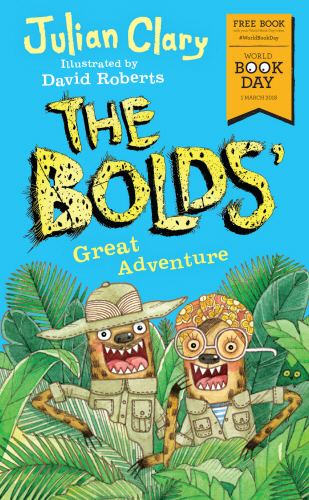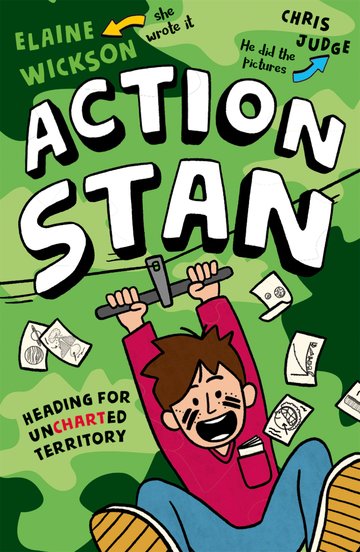How should we teach reading? What do we even mean by 'reading'? Decoding? Comprehension? Both? Is it more than that?
Scarborough's Reading Rope breaks things down a little more and, if nothing else, serves to show that there is quite a lot going on when one picks up a book to read.
If the above 8 headings (background knowledge; vocabulary; language structures etc) were all the necessary components of being able to read, is it the case that if we teach them all, children would be able to read? If so, how explicitly do they need to be taught? Can some of them be developed unwittingly in a language-rich, book-rich environment? Do teachers and schools really have a chance if a child isn't being brought up in such an environment?
So many questions, and given the range of advice that exists about reading instruction, I'm not sure we have the answers - at least not readily. Indeed, the 'reading wars' have been raging for years (although they focus less on comprehension) - just how exactly should we teach children to be able to read so that they can read words and understand their meaning as a whole?
My personal experience is that this is something that depends heavily on context. During my own career I have taught classes of children who have needed very little reading instruction and vice versa - I am judging this simply on their ability to understand what they have read. A cursory analysis of the differences between these classes reveals that it appears to me to be the children who have been brought up in a language-rich, book-rich environment who, by the time they are 10 or 11, can read exceptionally well and don't need teaching how to comprehend what they have read. Of course, some children will have been brought up in such an environment and still need help with their reading.
If you would like Aidan to work with you on developing reading at your school, please visit his website at https://www.aidansevers.com/services and get in touch via the contact details that can be found there.
Why does context matter? Well, for the purposes of this blog post, it matters because what one teacher in one classroom in one school somewhere does, might not work for another teacher somewhere else.
For example, a reading lesson consisting of asking children to complete two pages of mixed written comprehension questions might work with children who can already decode, comprehend and encode, but it is questionable as to how much they will have actually learned during that lesson. A lesson like this might have the
appearance of being successful in one setting but, share those resources online with a teacher in a different context and they might not experience the same levels of apparent success. The children in the second teacher's class might need teaching some strategies before they can access such an activity.
And what does said activity amount to in reality? Just another test. Weighing the pig won't make it fatter - it's just that weighing it also won't make it any lighter either: if a child can read already, then these kinds of activity might do no harm. But we must be clear: this practice of repeatedly giving children comprehension activities composed of mixed question types is not really teaching children much. However, perhaps the stress, or boredom, of constantly being weighed might start to have negative consequences for the pig: children are potentially put off reading if their main experience of it is repetitive comprehension activities.
So, if weighing the pig doesn't make it fatter, what does? Feeding it. But with what should we feed them with? What should we teach them in order to help them to read words and understand what they mean as a whole?
Is it as simple as Michael Rosen suggests? Is it just a case of sharing books with children and talking about them? I've seen first-hand anecdotal evidence which certainly suggests that
'Children are made readers on the laps of their parents' (Emilie Buchwald). My own children, taught very well to decode using phonics at school, also appear to be excellent comprehenders - they have grown up around family members who read an awful lot, have had models of high quality speech, have partaken in a wide variety of experiences, have broad vocabularies and spend a good deal of their own time reading or being read to. Give them a two-page comprehension activity and they'd probably ace it. However, as already mentioned, this certainly won't be the case for every child brought up in such a way.
But what should schools do when they receive children who haven't had the privilege of a language-rich, book-rich
and knowledge-rich upbringing, or those for whom that hasn't quite led to them being excellent readers? Downloading someone else's comprehension sheets and making children spend half an hour doing them isn't going to help them to become better readers. Should we teachers be trying to 'fill the gap' - to do the things that some children experience at home before they've ever even set foot in a school? Or is it too late once they're in school? Does the school-based approach need to be different?
As I said before: so many questions - questions I won't answer in this blog post. But I will leave you with something practical, in the spirit of this blog post, it'll be in the form of some questions to ask yourself when preparing a reading lesson:
Does this activity promote practice of existing skills or is it teaching them new strategies? Sometimes you will want to do some practising, other times you will want to teach them something new - how to ask questions of what they are readin, how to summarise what they have read, for example.
Does this activity help children to understand the text better or does it help them to understand a strategy better? Again, on some days you will just want to do activities that help children to gain a really good understanding of the passage; other days you might want to focus on teaching and practising a strategy such as inference making or visualising what has been described in the text.
Does this activity promote an enjoyment of reading? I tentatively include his question, and provide some clarification: I do not mean Is this activity fun? Reading is nearly always enjoyable when one understands what is being read. A reading task therefore can be enjoyable if it focuses on developing understanding of previously unknown word meanings which then helps he children to understand what hey have read. Anything that makes a child feel a sense of success will probably also be enjoyable for them. If they feel like it's pointless, repetitive or way too difficult, they lose that motivating sense of achievement.
Does the activity require silent completion or dialogic collaboration? I would suggest at the first option is reserved for testing - occasionally necessary; the second option should be key to a reading lesson. Teachers should be reading aloud, modelling their thoughts, demonstrating strategies, explaining word etymology and so on, and children should be joining in with this. Although the act of reading is usually a very private thing, a reading lesson will need to be the opposite if the children are to learn anything in it. A lesson can legitimately feature a set of printed out questions that require a written answer but should never consist of this alone - such activities will need surrounding with plenty of decent talk. And it's that book talk that will make the lesson enjoyable.
Do the children need any new prior knowledge (of the world or of words) before they access this text? Reading sessions can be derailed instantly if the children don't know enough about what they are reading to be able to understand it. Spending some time previously learning new stuff (could be by reading a non-fiction text) will help a following lesson to go much more smoothly - comprehension, including inference-making, relies on prior (or background) knowledge. Of course, some fiction texts (historical novels, for example) can be great ways for children to learn new things about a subject.
Have I (the teacher) read and understood the text and the questions and answers I intend to ask? When I've seen reading lessons go off the boil, it's usually because teachers haven't asked themselves this question during their preparation. Downloading someone else's comprehension sheets can easily lead to teachers not being able to answer the questions themselves and then getting into a right fluster in front of the children. Although a good reading lesson will nearly always follow a tangent or two, it's best to know where you're going in general: pre-empt the questions the children might ask, the words they might not know, and so on. Plan out what you will model, which questions you will ask and definitions you will give.
What other experiences of reading do the children in my class get? The timetabled reading lesson shouldn't be all that children get. They need to discuss vocabulary and read across the curriculum. They will benefit from a physical environment which celebrates reading. Adults who have read the books on the shelves and can discuss them with children will really boost their engagement with books and reading. If a lesson is the only time children experience reading then they may believe that reading only belongs in that slot on the timetable.
Perhaps by asking the above questions during lesson planning sessions, reading lessons might develop a little more focus and direction. By preparing in this way a lesson might end up being more guided than misguided.
If you would like Aidan to work with you on developing reading at your school, please visit his website at https://www.aidansevers.com/services and get in touch via the contact details that can be found there.




















